So, you remember how the Spaniards were scrambling for spices and accidentally found my beloved country, the Philippines, right? And that they colonized us for 333 years until our national heroes fought for our independence?
Well, during those 300-plus years, it’s not only the Filipino people that they suppressed, but also our culture. Their introduction of the Latin alphabet resulted in the decline of the Baybayin script, a pre-Hispanic writing system that was predominantly used in the islands of Luzon.[1]
The use of Baybayin stands as clear proof of pre-colonial Philippine history. What was once passed down through oral tradition was eventually written and preserved. Sadly, much of it was lost when Spanish colonizers suppressed indigenous practices, leaving Baybayin a nearly forgotten relic.
Yet resilience defines the Filipino spirit. Rather than letting this script fade, we are reviving Baybayin through art, education, and digital platforms—reclaiming it as a powerful symbol of identity and resistance.
Table of Contents
- What Exactly is the Baybayin Script?
- Baybayin Through Pre-Colonial and Early Colonial Times
- Decline of Use During Spanish Colonization
- Keeping the Script Alive
- Frequently Asked Questions (FAQs)
What Exactly is the Baybayin Script?
Baybayin is an old Tagalog writing system that’s written from left to right. It has 17 main symbols: 14 for consonants and 3 for vowels. By default, each consonant comes with an “a” sound. To change that vowel, people used small marks called kudlit (diacritics).
- If the mark is placed above, the consonant is read with an “e” or “i” sound.
- If the mark is placed below, it’s read with an “o” or “u” sound.
- Adding another mark could also cancel the vowel sound completely.
Basically, the kudlit is what makes Baybayin flexible. It tweaks the sound of the characters without needing extra letters.

In Baybayin, accent marks use a bar, dot, or cross. A dot or bar changes the sound to “e/i” or “o/u,” while a cross under a character removes the default “a” sound. Below is an example of a word written in Baybayin with its Latin translation.

Understanding the basics is one thing, but what makes Baybayin truly fascinating is the role it played in the lives of early Filipinos.
Baybayin Through Pre-Colonial and Early Colonial Times
From the surviving documents we have today, we know that Baybayin was mostly used in Luzon, especially in Palawan and Mindoro.[2] Archaeologists have also found artifacts with Baybayin inscriptions in some Visayan islands, which suggests it was used there, too.[3] Interestingly, there’s no clear evidence of Baybayin being used in Mindanao.
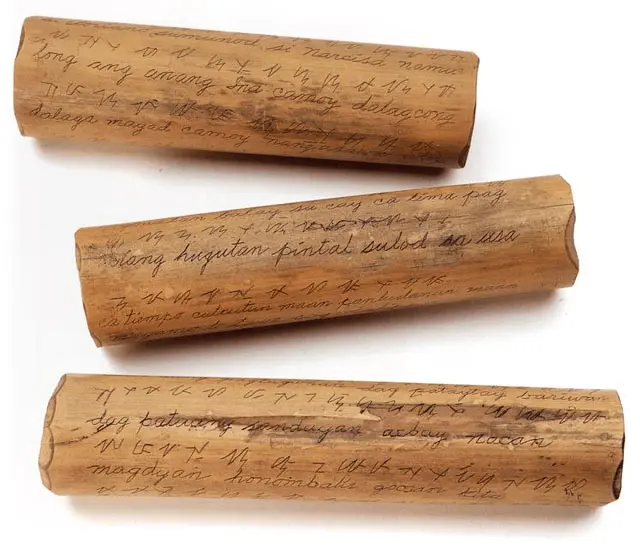
Back in the day, Baybayin wasn’t reserved for anything fancy. It showed up in personal notes, poetry, and even rituals. Later, during the colonial period, it assumed new purposes, including keeping written records of property, financial transactions, and even church teachings.
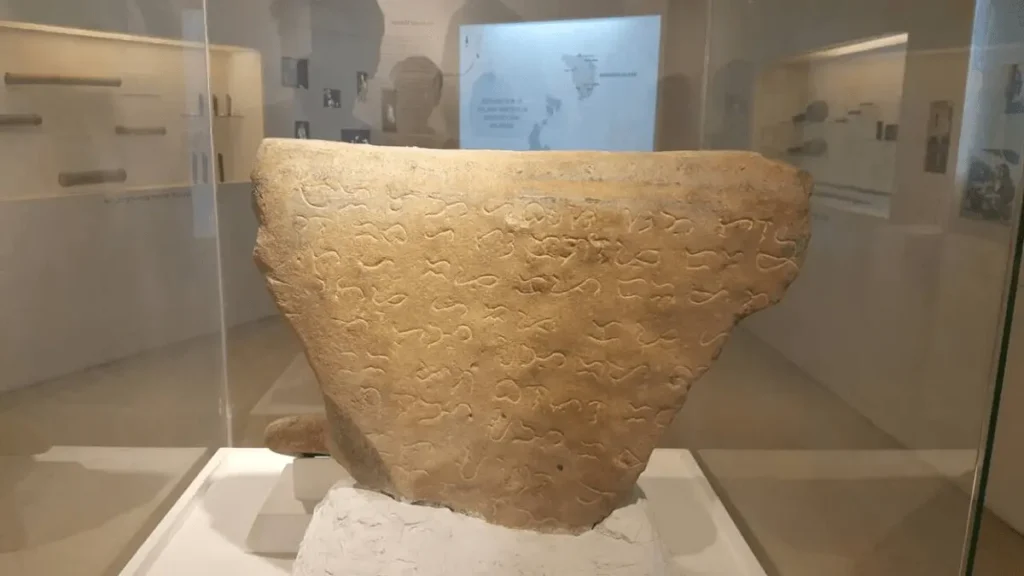
One of the most important milestones for Baybayin is its appearance in the Doctrina Christiana en Lengua Española y Tagala, published in 1593.[4] This book, a catechism for teaching Catholic prayers, was printed in both Tagalog (using Baybayin) and Latin script. It’s the earliest printed book in a Philippine language—and the only surviving example of Baybayin from the 1500s.

Decline of Use During Spanish Colonization
Now, I’ll be the last person to clear the Spaniards’ name—after all, they committed plenty of atrocities in my country. But we’re not fans of historical distortion here, so let’s be fair about this part.
Baybayin use indeed declined during the Spanish era, mainly because the Latin alphabet was introduced and quickly became dominant. But contrary to popular belief, there’s no hard evidence that Spanish friars went around burning Baybayin documents.[5]
In fact, they actually used the script to help spread Catholicism across the islands. A priest named Fr. Francisco López even improved the script by adding a virama—a small cross under a consonant that cancels its vowel sound, making it easier to represent final consonants.[6]
So, if the Spaniards weren’t completely to blame, what explains the scarcity of Baybayin artifacts today? A big reason is that most early writings were done on perishable materials like bamboo and palm leaves. Naturally, those didn’t survive centuries of humidity and decay. The Philippines’ tropical climate only sped up their deterioration.
We’re fortunate that some inscriptions were carved into stone, etched on clay pots, or preserved on paper. In fact, the University of Santo Tomas (UST) houses two Baybayin land deeds — legal documents proving the sale of land parcels during 17th-century Manila.
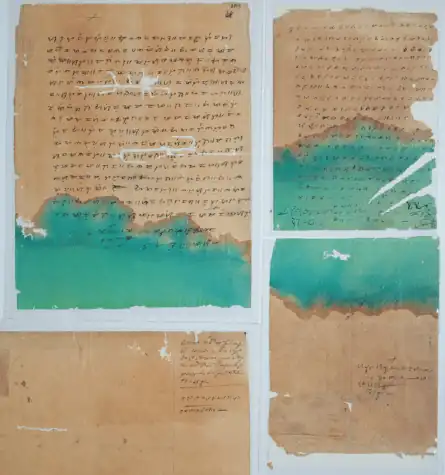
These are so valuable that in 2014, the National Archives of the Philippines officially declared them National Cultural Treasures.
The Revival of Baybayin in Modern-Day Philippines
Today, the Philippine government is taking active steps to preserve what remains of Baybayin. The Baybayin: Ancient and Traditional Scripts of the Philippines Gallery now stands as a permanent exhibition, showcasing archaeological artifacts, Spanish-era records, and ethnographic collections.
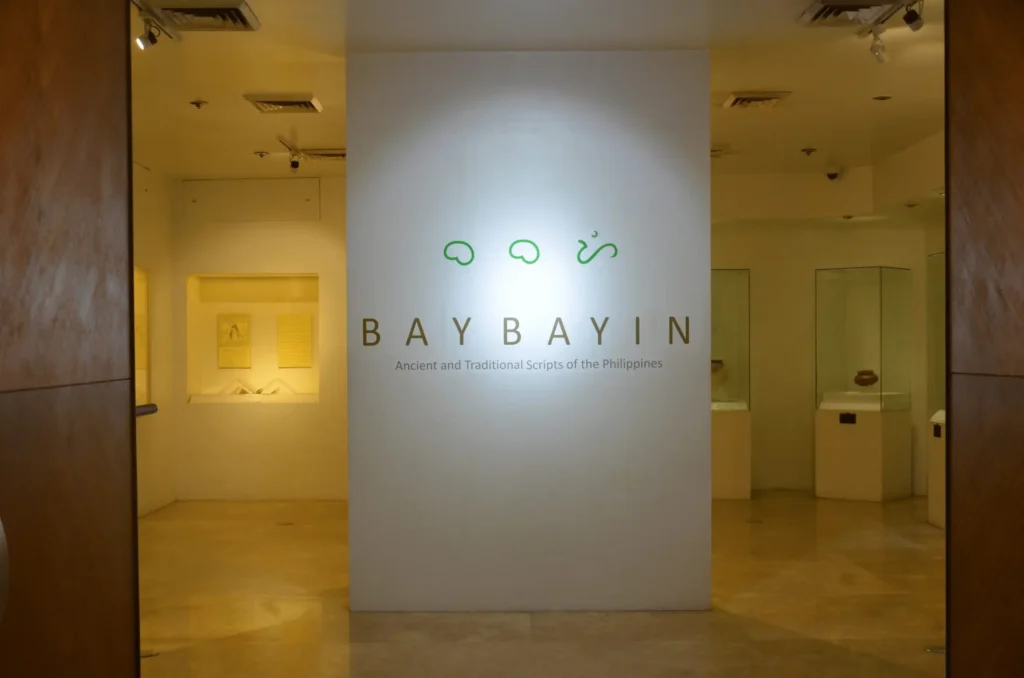
In parts of Mindoro and Palawan, indigenous groups such as the Buhid-Mangyan and the Tagbanua still use Baybayin in their daily lives. Their continued practice keeps the script alive in a way no museum ever could.
Beyond these communities, Baybayin is thriving in modern culture. You’ll find it inked into tattoos, painted on murals, and printed on streetwear. Artists are reimagining their characters, fusing tradition with contemporary design to create a visual language that speaks of both heritage and pride.

And thanks to technology, Baybayin has a new digital home. There are websites with tutorials and gamified lessons, online keyboards that let you type in Baybayin, and social platforms spreading its use to a global audience.
While some critics argue that this revival is merely done for aesthetic purposes, one can’t deny its educational value. Some cultural groups are advocating for formally adopting a national writing system, although the bill pushing for this is still under review by the Philippine government.[7][8]
Keeping the Script Alive
Baybayin’s survival is proof that cultural identity cannot be erased. Its revival in the 21st century is proof that the Philippines has always had its own voice, long before outside influences shaped it.
In every curve of the script lies a story of resilience.
Regardless of what critics say, today’s use of this ancient writing script is a reminder to us—modern Filipinos—of who we are, where we came from, and how we want to shape the cultural legacy we leave behind.
Curious to try Baybayin yourself? Start small—learn a few characters, practice writing your name, and see how this ancient script can still find a place in your everyday life
Frequently Asked Questions (FAQs)
Why should Baybayin be implemented?
Baybayin isn’t just a writing system—it’s a cultural treasure. Bringing it back through education, art, and tech helps Filipinos reconnect with their roots and preserve a unique part of our heritage.
Is Baybayin a dying language?
Not exactly. While its everyday use declined during the colonial period, Baybayin has never completely disappeared. Today, it’s experiencing a revival in schools, communities, and creative spaces.
Can you still learn Baybayin?
Absolutely. Baybayin can be learned through books, online tutorials, workshops, and even mobile apps. Some schools and cultural groups also teach it as part of heritage programs.
Is Baybayin easy to learn?
Yes! Baybayin has only 17 basic characters, so it’s much simpler compared to many other scripts. Once you understand the vowel marks (diacritics), writing and reading them becomes pretty straightforward. Here’s a comprehensive and beginner-friendly guide on how to start writing in Baybayin.
References:
[1] A Baybayin word recognition system – PMC
[2] Preserving Heritages: The Mindoro-Palawan Bamboo Collection | 4 Corners of the World
[5] Baybayin, The Ancient Script of the Philippines
[6] Internet Archive. Barangay: Sixteenth-Century Philippine Culture and Society by William Henry-Scott
[7] House panel approves use of Baybayin as country’s national writing system | Philstar.com
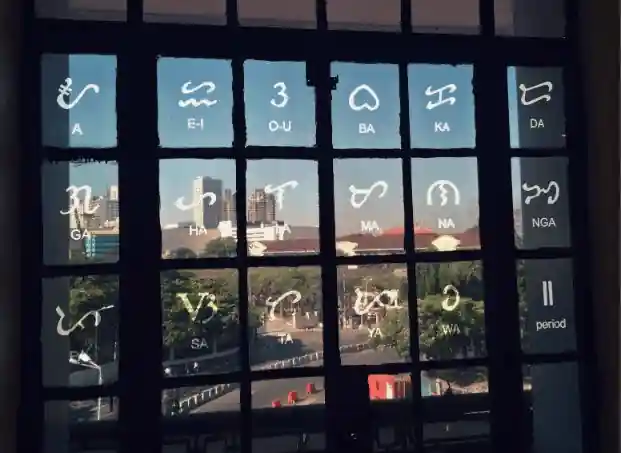




0 Comments